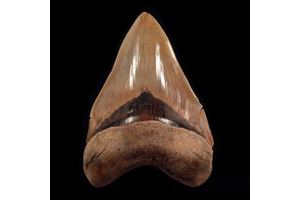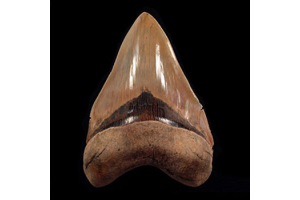Page 2 - Other Fossils
- - September 21, 2025
Long before humans roamed the Earth, the oceans teemed with a vast array of fascinating life forms. Among these were Orthoceras—extinct marine cephalopods that thrived over 400 million years ago. Their fossilized remains, preserved within stone, offer us a striking connection to that prehistoric world. Today, fossil collectors, interior designers, and natural history enthusiasts cherish Orthoceras specimens not only for their scientific significance but also for their natural beauty. After all, holding a polished fossil in your hand is like having a fragment of time itself.
For anyone seeking authentic treasures, choosing an orthoceras fossil for sale is more than just a purchase—it is an invitation to own a piece of Earth’s geological heritage.
The Science Behind Orthoceras Fossils
Orthoceras, meaning “straight horn,” were ancient relatives of squid and octopuses. Their elongated shells grew chamber by chamber, each filled with gas to aid buoyancy. As these creatures died and settled
- - September 21, 2025
Have you ever imagined holding a piece of one of the most fearsome predators that ever lived? Something real—not from a movie or a museum, but something you can actually own. That’s the thrill of owning a Tyrannosaurus rex tooth. It’s not just a fossil; it’s a story millions of years in the making.
These teeth aren’t just bones stuck in stone. They’re sharp, beautifully preserved relics of a time when dinosaurs reigned supreme on Earth. And for collectors, fossil lovers, and science fans alike, a Tyrannosaurus rex tooth represents the ultimate prehistoric prize.
Let’s explore why this fossil stands out—and why it might just deserve a place in your collection.
Why the T. rex Still Reigns Supreme?
The Tyrannosaurus rex is more than a pop culture icon. It was the apex predator of its time—growing up to 40 feet long and equipped with a bite force stronger than any land animal living or extinct. But the real evidence of its power? Its teeth.
A single Tyrannosaurus rex tooth could measure
- - September 03, 2025
The ocean holds a memory far older than human history, and some of its secrets lie hidden in the fossilized remains of ancient predators. Among these, one relic inspires both awe and curiosity—the tooth of the mighty megalodon. This prehistoric shark once reigned supreme, its bite leaving behind fossils that continue to spark wonder and awe. For anyone asking how big the megalodon tooth was, the answer opens a window into a creature that dwarfed the sharks we know today.
Before diving into details, it’s worth noting that these teeth are not simply remnants of a bygone predator. They serve as a record of survival, evolution, and scale, telling us more than bones ever could about the ocean’s most extraordinary hunter.
The fossil as a storyteller
Fossilized teeth are more than hardened remains—they are time capsules. Unlike bones, which often decompose or scatter, shark teeth have a higher chance of preservation. Sharks continuously shed teeth throughout their lives, and megalodons were no
- - August 28, 2025
Some accessories are simply pretty; others carry a story so captivating that they practically invite conversation. A fossil shark tooth pendant isn’t just a piece of jewelry, it’s a fragment of Earth’s history, a relic from an apex predator that swam our oceans millions of years ago.
Wearing a Megalodon shark tooth necklace doesn’t whisper style, it declares it boldly, turning heads and sparking curiosity. This is more than an ornament; it’s a talking point, a history lesson, and a personal statement all in one.
A Piece of Prehistoric Power Around Your Neck
Imagine walking into a beachside café or strolling along the boardwalk with a Miocene-era Sand Tiger shark tooth hanging from a leather cord around your neck. Instantly, it’s clear you’re wearing something different, something real. Each fossilized tooth, like the top-quality wire-wrapped examples from South Carolina, holds millions of years of natural history.
People can’t help but notice. They ask: “Is that real?” And you get to answer,
- - August 27, 2025
Beneath the rolling hills of California’s Central Valley lies a silent archive of life from millions of years ago. Every grain of earth in this place has cradled the remains of creatures that once ruled the oceans, sharks so massive that their teeth could dwarf the palm of your hand. Some call it a fossil bed, others call it a treasure trove, but to those who have walked its dry slopes, it feels like stepping directly into another era.
This is Shark Tooth Hill, one of the richest fossil deposits in the United States and a world-class site for uncovering Megalodon teeth for sale. It’s a location where science, history, and adventure collide, offering both researchers and collectors the chance to connect with the ancient seas that once covered this region. From small, affordable specimens perfect for beginners to giant, pristine Megalodon teeth that command staggering prices, Shark Tooth Hill remains the dream destination for fossil enthusiasts.
Let’s explore the remarkable story behind
- - August 19, 2025
In fossil collecting, people don’t chase perfection. They chase stories, history, and originality that only nature can leave behind. A twisted or malformed Megalodon tooth tells more than age. It tells of a life lived under stress, injury, and adaptation. These rare fossilized teeth don’t follow perfect shapes. They break form. They show curves and ridges that nature didn’t copy. That makes them rare in the most honest way. When collectors spot a pathological megalodon tooth for sale, they don’t see a flaw. They know a survivor, a relic that speaks louder than a polished specimen ever could.
Let’s explore more detailed information:
Each mark shows how nature left its trace
Collectors often admire what others overlook. A pathological Megalodon tooth stands out the moment it is held. The damage didn’t come from the ground or the dig. It came from life inside the mouth of one of the ocean’s largest predators. These teeth reflect infections, injuries, and strange regrowth that happened before
- - August 17, 2025
You’re familiar with how most fossil dealers operate. They chase volume. Easy sells. Cookie-cutter Meg teeth that look like they’ve been through a rock tumbler and a toddler’s pocket. The kind that screams “bulk bin” instead of “centerpiece.” Now, we respect the hustle, but we don’t do business like that.
We don’t just sell fossils. We curate legends. If it’s not the kind of specimen that makes seasoned collectors lean in and whisper, “Where did you get that?”—we pass. It’s why when we list something like a Caribbean Carcharocles megalodon tooth, jaws drop. We live for that drop.
The Hunt Is Real (And Ruthless)
It is important to clarify that rare fossils are not merely lying around awaiting discovery. They are pursued. Followed. Bargained. Sometimes, it is even excavated through layers of politics, limestone, and red tape. The kind of treasures we offer—Megalodon teeth with insane bourlettes, razor serrations, and perfect preservation? They usually don’t make it past the quarry floor
- - August 12, 2025
Every collector has that moment. The one where they’re staring down a supposed “authentic” fossil online, squinting at a grainy thumbnail like it’s a Rosetta Stone. One click could get you a 66-million-year-old relic—or a cleverly aged chunk of cement shaped in someone’s garage.
Pachycephalosaur teeth are some of the most sought-after dinosaur fossils in the world, and for good reason. These dome-headed creatures, famous for their skulls thick enough to rival bowling balls, make up only a microscopic sliver of the fossil record. Just one percent, to be exact. That’s not a cute exaggeration. It’s science.
Now, think about that. One percent of all fossil finds in the Hell Creek Formation belong to this quirky little group. So if you’re seeing Pachycephalosaur teeth for sale in every other fossil listing, the math isn’t mathing.
The reality is, most of what’s floating around in the online fossil market is either misidentified, misrepresented, or straight-up manufactured. If you want the
- - August 12, 2025
The fossil record is not silent. It speaks through texture, through shape, through absence. Among its most eloquent messengers is Anzu wyliei—an oviraptorosaur whose name echoes myth but whose presence is rooted in science. Its discovery didn’t just add another species to the Cretaceous roster. It reframed what we thought we knew.
Nicknamed the “Chicken from Hell,” this towering, feathered theropod moved with power and grace. Thirteen feet long. Six hundred pounds. Its beak was toothless, its limbs elongated, and its claws—those dramatic, crescent-shaped weapons—were both brutal and beautiful. And today, some of those very claws endure, not as relics, but as rare opportunities. You’ll find Anzu claws for sale in our collection, but they are far more than curated bone. They are artifacts of revision, moments of meaning, and physical symbols of paleontology’s evolution.
Anzu and the Allure of the Oviraptor
To appreciate Anzu is to unlearn what came before. For decades, oviraptorosaurs were
- - August 12, 2025
Holding a piece of deep history that once ripped through bone and lived through ages gives you more than just a fossil. A T. rex tooth carries that force. This isn’t something you grab in a rush. People collect these for passion, for science, or for the thrill of owning something rare and ancient. If you plan to buy one, you need to think like a collector and act with clarity. Don’t guess. Don’t assume. Take the time. Know the facts before you spend your money on a piece of prehistory.
Here is more detailed information:
Identify an Authentic Tooth by Surface and Shape
You must inspect the surface to catch the clues. Fossilized enamel feels dense, not chalky. It carries stress lines, minor chips, and visible texture. A fake will look too smooth or too polished. Real teeth show serrations, layers of color, and often a curved body. Some even hold signs of wear from actual hunting. The shape should match what experts expect from a predator that powerful. You don’t need to guess. Use your eyes







